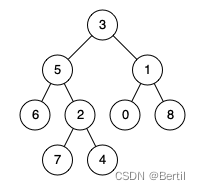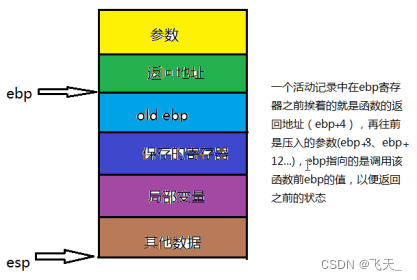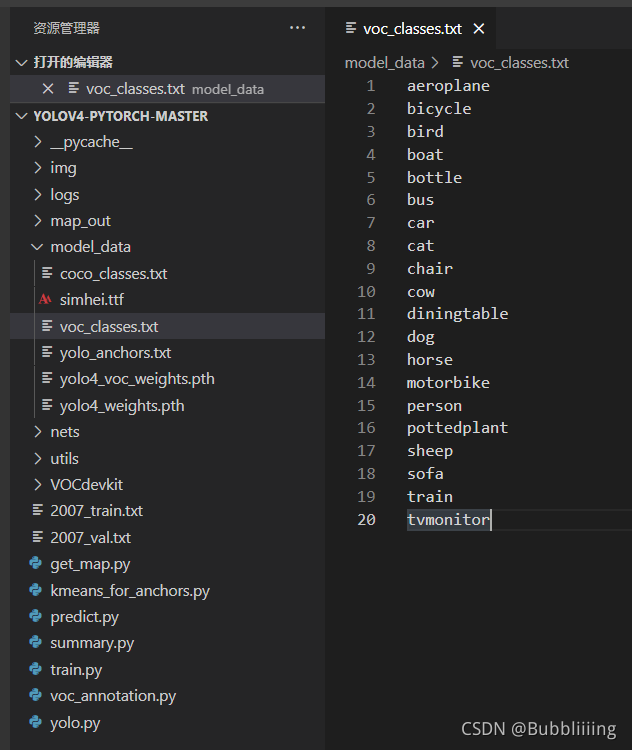当前位置:网站首页>Pytest parameterization some tips you don't know / pytest you don't know
Pytest parameterization some tips you don't know / pytest you don't know
2022-07-06 09:01:00 【Automated test seventh uncle】
Preface
unittest Unit test framework uses DDT Do data-driven testing , So as a more powerful and flexible Pytest How can a framework not have the concept of data-driven ? Actually Pytest It's using @pytest.mark.parametrize Decorator to achieve data-driven testing , So today, let's talk about how it does data-driven testing .

Decoration test class
"""
import pytest
data_1 = [
(1, 2, 3),
(4, 5, 9)
]
def add(a, b):
return a + b
@pytest.mark.parametrize('a, b, expect', data_1)
class TestParametrize(object):
def test_parametrize_1(self, a, b, expect):
print('\n Test functions 1 The test data is \n{}-{}'.format(a, b))
assert add(a, b) == expect
def test_parametrize_2(self, a, b, expect):
print('\n Test functions 2 The data is \n{}-{}'.format(a, b))
assert add(a, b) == expect
if __name__ == '__main__':
pytest.main(['-sv'])Output
collecting ... collected 4 items
test_parametrize.py::TestParametrize::test_parametrize_1[1-2-3]
Test functions 1 The test data is
1-2
PASSED
test_parametrize.py::TestParametrize::test_parametrize_1[4-5-9]
Test functions 1 The test data is
4-5
PASSED
test_parametrize.py::TestParametrize::test_parametrize_2[1-2-3]
Test functions 2 The data is
1-2
PASSED
test_parametrize.py::TestParametrize::test_parametrize_2[4-5-9]
Test functions 2 The data is
4-5
PASSED
========================== 4 passed in 0.21 seconds ===========================
Process finished with exit code 0explain
When decorators decorate test classes , The data set will be passed to all methods of the class
Decorate test functions
Single data
import pytest
data = [1, 2]
@pytest.mark.parametrize('a', data)
def test_parametrize(a):
print('\n The loaded test data is \n{}'.format(a))
if __name__ == '__main__':
pytest.main(['-s'])Output
============================= test session starts =============================
platform win32 -- Python 3.7.2, pytest-4.3.1, py-1.8.0, pluggy-0.9.0
rootdir: E:\CnblogCode\pytest_parametrize, inifile:
plugins: rerunfailures-7.0, metadata-1.8.0, html-1.20.0
collected 2 items
test_parametrize.py
The loaded test data is
1
.
The loaded test data is
2
.
========================== 2 passed in 0.16 seconds ===========================
Process finished with exit code 0explain
When a test case only needs one parameter , We store data in a list of unordered nested sequences ,@pytest.mark.parametrize('a', data) The first argument to the decorator also requires only one variable to receive each element in the list , The second parameter passes the list of stored data , Then the test case needs to receive the test data using a string with the same name ( In the instance a) And how many elements of the list will generate and execute how many test cases
A set of data
import pytest
data = [
[1, 2, 3],
[4, 5, 9]
] # List nested list
# data_tuple = [
# (1, 2, 3),
# (4, 5, 9)
# ] # List nested tuples
@pytest.mark.parametrize('a, b, expect', data)
def test_parametrize_1(a, b, expect): # A parameter receives a data
print('\n The test data is \n{},{},{}'.format(a, b, expect))
actual = a + b
assert actual == expect
@pytest.mark.parametrize('value', data)
def test_parametrize_2(value): # A parameter receives a set of data
print('\n The test data is \n{}'.format(value))
actual = value[0] + value[1]
assert actual == value[2]
if __name__ == '__main__':
pytest.main(['-s'])Output
============================= test session starts =============================
platform win32 -- Python 3.7.2, pytest-4.3.1, py-1.8.0, pluggy-0.9.0
rootdir: E:\CnblogCode\pytest_parametrize, inifile:
plugins: rerunfailures-7.0, metadata-1.8.0, html-1.20.0
collected 4 items
test_parametrize.py
The test data is
1,2,3
.
The test data is
4,5,9
.
The test data is
[1, 2, 3]
.
The test data is
[4, 5, 9]
.
========================== 4 passed in 0.17 seconds ===========================
Process finished with exit code 0explain
When a test case needs multiple data , We can use nested sequences ( Nested tuples & Nested list ) To store test data
Decorator @pytest.mark.parametrize() You can use a single variable to receive data , Multiple variables can also be used to receive , Again , Test case functions also need to be consistent with them
When receiving with a single variable , When the test data is passed inside the test function, it is every element or small list in the list , You need to index every data
When multiple variables are used to receive data , Then each variable receives each element in a small list or tuple
How many groups of small lists or tuples are nested in a list , Test how many test cases are generated
Diagram correspondence

Combined data
"""
import pytest
data_1 = [1, 2]
data_2 = [3, 4]
@pytest.mark.parametrize('a', data_1)
@pytest.mark.parametrize('b', data_2)
def test_parametrize_1(a, b):
print('\n The test data is \n{},{}'.format(a, b))
if __name__ == '__main__':
pytest.main(['-s'])Output
============================= test session starts =============================
platform win32 -- Python 3.7.2, pytest-4.3.1, py-1.8.0, pluggy-0.9.0
rootdir: E:\CnblogCode\pytest_parametrize, inifile:
plugins: rerunfailures-7.0, metadata-1.8.0, html-1.20.0
collected 4 items
test_parametrize.py
The test data is
1,3
.
The test data is
2,3
.
The test data is
1,4
.
The test data is
2,4
.
========================== 4 passed in 0.24 seconds ===========================
Process finished with exit code 0explain
Pass the test results , It's not difficult for us to analyze , A test function can also be decorated by multiple parameterized decorators at the same time , Then the data in multiple decorators will be cross combined and passed to the test function , And then generate n*n Test cases , This also provides convenience for our test design
Tag use cases
You can mark test cases directly , Parametric decorators can also identify ( Mark use case failure or skip )
Marked as unconditionally skipped ( Mark failure as xfail, Try it yourself )
"""
import pytest
data_1 = [
[1, 2, 3],
pytest.param(3, 4, 8, marks=pytest.mark.skip)
]
def add(a, b):
return a + b
@pytest.mark.parametrize('a, b, expect', data_1)
def test_parametrize_1(a, b, expect):
print('\n The test data is \n{},{}'.format(a, b))
assert add(a, b) == expect
if __name__ == '__main__':
pytest.main(['-vs'])Output
============================= test session starts =============================
platform win32 -- Python 3.7.2, pytest-4.3.1, py-1.8.0, pluggy-0.9.0 -- C:\Programs\Python\Python37-32\python.exe
cachedir: .pytest_cache
metadata: {'Python': '3.7.2', 'Platform': 'Windows-7-6.1.7601-SP1', 'Packages': {'pytest': '4.3.1', 'py': '1.8.0', 'pluggy': '0.9.0'}, 'Plugins': {'rerunfailures': '7.0', 'metadata': '1.8.0', 'html': '1.20.0'}, 'JAVA_HOME': 'D:\\JDK'}
rootdir: E:\CnblogCode\pytest_parametrize, inifile:
plugins: rerunfailures-7.0, metadata-1.8.0, html-1.20.0
collecting ... collected 2 items
test_parametrize.py::test_parametrize_1[1-2-3]
The test data is
1,2
PASSED
test_parametrize.py::test_parametrize_1[3-4-8] SKIPPED
===================== 1 passed, 1 skipped in 0.17 seconds =====================
Process finished with exit code 0explain
The output shows that 2 A use case , One passes , One was skipped , When we don't want to execute a certain set of test data , We can mark skip or skipif; When we expect a set of data to fail , We can mark it as xfail etc.
Nested Dictionary
"""
import pytest
data_1 = (
{
'user': 1,
'pwd': 2
},
{
'user': 3,
'pwd': 4
}
)
@pytest.mark.parametrize('dic', data_1)
def test_parametrize_1(dic):
print('\n The test data is \n{}'.format(dic))
if __name__ == '__main__':
pytest.main(['-s'])Output
============================= test session starts =============================
platform win32 -- Python 3.7.2, pytest-4.3.1, py-1.8.0, pluggy-0.9.0
rootdir: E:\CnblogCode\pytest_parametrize, inifile:
plugins: rerunfailures-7.0, metadata-1.8.0, html-1.20.0
collected 2 items
test_parametrize.py
The test data is
{'user': 1, 'pwd': 2}
.
The test data is
{'user': 3, 'pwd': 4}
.
========================== 2 passed in 0.20 seconds ===========================
Process finished with exit code 0Increase readability
Use ids Parameters
The parametric decorator has an extra parameter ids, Each test case can be identified , Customize the display of test data results , To increase readability , We can mark the test data used by each test case , Add some descriptions appropriately
You need to know before using ,ids The parameter should be a list of strings , Must be consistent with the length of the data object list , We can try to use ids, Look at the effect
"""
import pytest
data_1 = [
(1, 2, 3),
(4, 5, 9)
]
ids = ["a:{} + b:{} = expect:{}".format(a, b, expect) for a, b, expect in data_1]
def add(a, b):
return a + b
@pytest.mark.parametrize('a, b, expect', data_1, ids=ids)
class TestParametrize(object):
def test_parametrize_1(self, a, b, expect):
print('\n Test functions 1 The test data is \n{}-{}'.format(a, b))
assert add(a, b) == expect
def test_parametrize_2(self, a, b, expect):
print('\n Test functions 2 The data is \n{}-{}'.format(a, b))
assert add(a, b) == expect
if __name__ == '__main__':
pytest.main(['-v']) # -v : More detailed output test results Output
Decorator does not pass ids Output of parameters
collecting ... collected 4 items
test_parametrize.py::TestParametrize::test_parametrize_1[1-2-3] PASSED [ 25%]
test_parametrize.py::TestParametrize::test_parametrize_1[4-5-9] PASSED [ 50%]
test_parametrize.py::TestParametrize::test_parametrize_2[1-2-3] PASSED [ 75%]
test_parametrize.py::TestParametrize::test_parametrize_2[4-5-9] PASSED [100%]
========================== 4 passed in 0.16 seconds ===========================
Process finished with exit code 0Decorator transfer ids Output of parameters
collecting ... collected 4 items
test_parametrize.py::TestParametrize::test_parametrize_1[a:1 + b:2 = expect:3] PASSED [ 25%]
test_parametrize.py::TestParametrize::test_parametrize_1[a:4 + b:5 = expect:9] PASSED [ 50%]
test_parametrize.py::TestParametrize::test_parametrize_2[a:1 + b:2 = expect:3] PASSED [ 75%]
test_parametrize.py::TestParametrize::test_parametrize_2[a:4 + b:5 = expect:9] PASSED [100%]
========================== 4 passed in 0.20 seconds ===========================
Process finished with exit code 0explain
To execute the command, I used -v, The output results will be displayed in more detail , You can see that the use cases in all data results are clearly marked by a list , And it can be seen more intuitively through this kind of mark , The data name and test content used in each test case
Customize id Make a mark
Besides using ids Parameters increase output readability , We can also define a next to the parameter in the parameter list id Value for identification , See the following example
"""
import pytest
data_1 = [
pytest.param(1, 2, 3, id="(a+b):pass"), # id The value of can be customized , As long as it is convenient to understand what each use case does
pytest.param(4, 5, 10, id="(a+b):fail")
]
def add(a, b):
return a + b
class TestParametrize(object):
@pytest.mark.parametrize('a, b, expect', data_1)
def test_parametrize_1(self, a, b, expect):
assert add(a, b) == expect
if __name__ == '__main__':
pytest.main(['-v'])Output
test_parametrize.py::TestParametrize::test_parametrize_1[(a+b):pass] PASSED [ 50%]
test_parametrize.py::TestParametrize::test_parametrize_1[(a+b):fail] FAILED [100%]
================================== FAILURES ===================================
_______________ TestParametrize.test_parametrize_1[(a+b):fail] ________________
self = <pytest_parametrize.test_parametrize.TestParametrize object at 0x000001D7BFC4C748>
a = 4, b = 5, expect = 10
@pytest.mark.parametrize('a, b, expect', data_1)
def test_parametrize_1(self, a, b, expect):
> assert add(a, b) == expect
E assert 9 == 10
E -9
E +10
test_parametrize.py:28: AssertionError
===================== 1 failed, 1 passed in 0.35 seconds ======================
Process finished with exit code 0explain
If you use this method to mark test cases , Be sure to use it in strict accordance with the format I write , The grammar is pytest.param(value, id='somthing')
summary
Pytest That's how data-driven is implemented in
master
1. Decorators and test cases use a single variable to receive multiple groups of data and multiple variables to receive multiple data access methods
2. Different test data forms ( List nested tuples , list , Dictionary, etc ) when , How to transfer and access data
3. Decorators decorate the differences between test classes and test functions : When decorating a test class , All methods in the class must receive and send test data , Otherwise, an error will be reported , It's flexible when decorating test functions , If functions don't use data, they don't need decoration
4. For readability of output results , You can choose to use ids Parameters , And defined in test data id Parameter values to identify test cases
Be careful
1. The first parameter of the decorator is a string parameter in the form of a list "a, b, c" Can not write "a", "b", "c"
2. ids It's a list of strings , Its length should be consistent with the length of the test data list
Finally, that's all for today's article , Favorite friends can like collection comments and pay attention .

边栏推荐
- BN折叠及其量化
- LeetCode41——First Missing Positive——hashing in place & swap
- I-BERT
- 在QWidget上实现窗口阻塞
- To effectively improve the quality of software products, find a third-party software evaluation organization
- [Hacker News Weekly] data visualization artifact; Top 10 Web hacker technologies; Postman supports grpc
- Swagger setting field required is mandatory
- LeetCode:236. 二叉树的最近公共祖先
- Leetcode: Jianzhi offer 04 Search in two-dimensional array
- requests的深入刨析及封装调用
猜你喜欢

LeetCode:236. 二叉树的最近公共祖先

Variable length parameter

【文本生成】论文合集推荐丨 斯坦福研究者引入时间控制方法 长文本生成更流畅

Nacos 的安装与服务的注册
![[OC foundation framework] - string and date and time >](/img/75/e20064fd0066810135771a01f54360.png)
[OC foundation framework] - string and date and time >

LeetCode:221. 最大正方形

UnsupportedOperationException异常

什么是MySQL?MySql的学习之路是怎样的

LeetCode:236. The nearest common ancestor of binary tree

Target detection - pytorch uses mobilenet series (V1, V2, V3) to build yolov4 target detection platform
随机推荐
Cesium draw points, lines, and faces
LeetCode:221. 最大正方形
Alibaba cloud server mining virus solution (practiced)
LeetCode:41. 缺失的第一个正数
The ECU of 21 Audi q5l 45tfsi brushes is upgraded to master special adjustment, and the horsepower is safely and stably increased to 305 horsepower
opencv+dlib实现给蒙娜丽莎“配”眼镜
[OC]-<UI入门>--常用控件-UIButton
ant-design的走马灯(Carousel)组件在TS(typescript)环境中调用prev以及next方法
自定义卷积注意力算子的CUDA实现
【剑指offer】序列化二叉树
UnsupportedOperationException异常
Booking of tourism products in Gansu quadrupled: "green horse" became popular, and one room of B & B around Gansu museum was hard to find
R language ggplot2 visualization, custom ggplot2 visualization image legend background color of legend
Intel Distiller工具包-量化实现3
Pytest之收集用例规则与运行指定用例
如何有效地进行自动化测试?
在QWidget上实现窗口阻塞
LeetCode:236. The nearest common ancestor of binary tree
Advanced Computer Network Review(4)——Congestion Control of MPTCP
数学建模2004B题(输电问题)